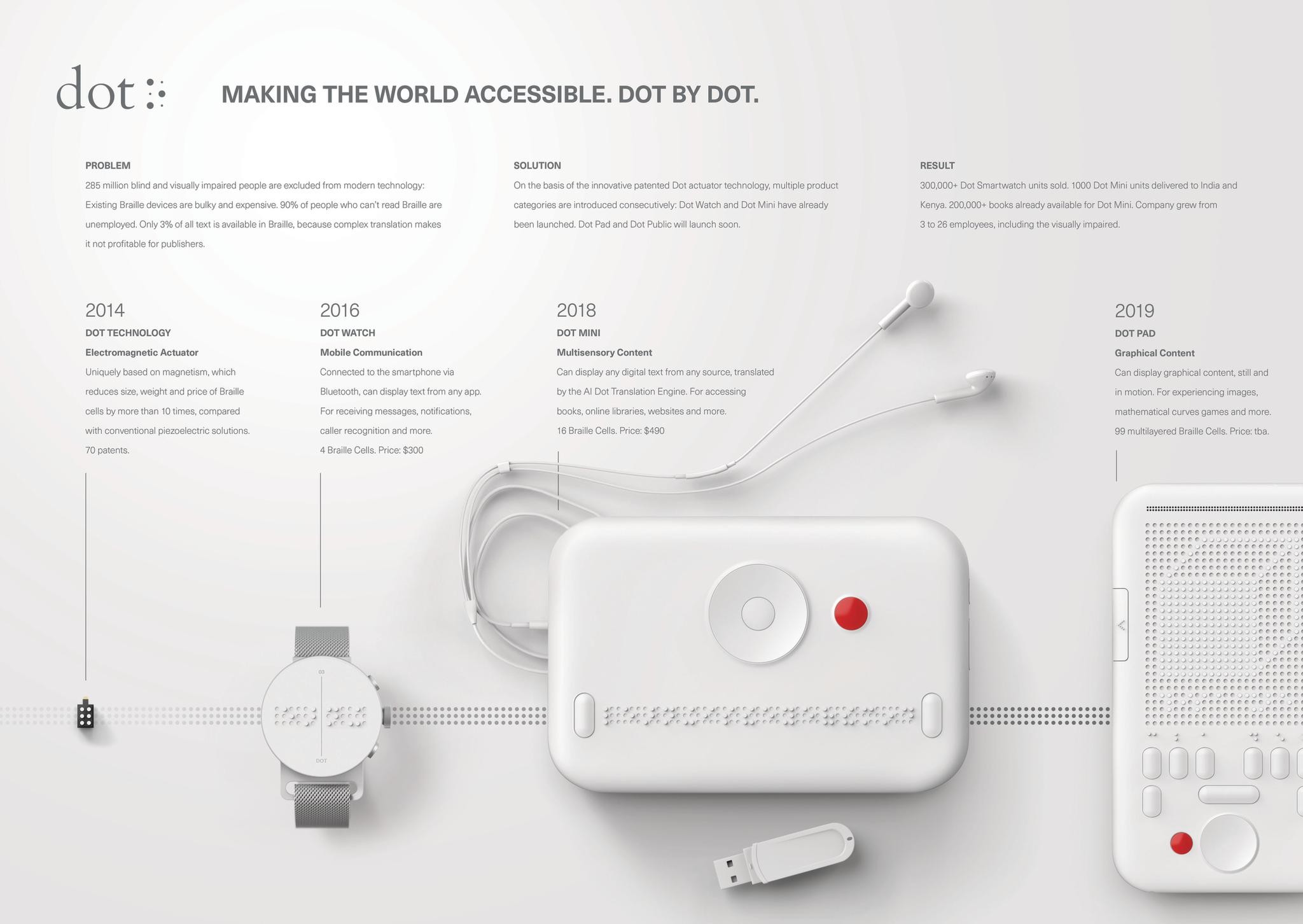Eurobest
Dot Translate. The First Braille Translator Based on AI.
SERVICEPLAN GERMANY, Munich / DOT INCORPORATION / 2019
Awards:

Overview
Entries
Credits
Overview
Background
While we are all used to having access to almost any content, the situation is very different for the 285 million blind and visually impaired people worldwide: Only 3% of all text content is available in braille, because translation is so complex that it requires input by human experts, which makes it not accessible for individuals and not profitable for publishers in most cases. There is no alternative to braille, especially when it comes to education: 90% of people who can’t read braille are unemployed.
Braille translation is highly complex: Grade 2 Braille – the standard for longer text – relies heavily on contractions, which makes it 50% shorter. This inevitably leads to ambiguity, where exact meaning depends on context and up to five consecutive rules to be followed for a single word. So far, even the best existing software requires additional input by human experts.
Idea
Dot Translate is the first braille translator based on AI. It can translate any digital text to braille on its own, at near-human accuracy. Because it’s being trained with millions of most accurate human translation samples / data to understand context.
Dot Translate is accessible through an intuitive web interface, Dot devices and other digital braille devices. It can translate a wide range of formats and sources: type, e-pub, pdf, txt, doc, rtf, html and even voice. Through the bookmark feature, users can directly translate and format whole websites. Dot Translate can be integrated by third party services and products. But most importantly: While existing braille translation software costs up to $700, Dot Translate is free to use. This is important, because due to the nature of Machine Learning and a feedback tool, usage increases the accuracy.
Strategy
Existing braille translation software works by applying a small set of pre-defined rules, which doesn’t cover many cases. Our approach is radically different: We use a machine learning based system. This takes a while to set up but can then reach an much higher accuracy than rule-based translators. The key to success was getting large amounts of training data as well as users. For the first, we partnered with strategically important stakeholders and content owners, for the second, we made our product free to use, while existing software costs up to $700.
Execution
Dot Translate is the first braille translator based on AI. It can translate any digital text to braille on its own, at near-human accuracy. Because it’s being trained with millions of most accurate human translations.
Braille translation is highly complex: Grade 2 Braille – the standard for longer text – relies heavily on contractions. This leads to ambiguity, where meaning depends on context and up to five consecutive rules for a single letter. So far, even the best existing software requires additional input by human experts. Existing braille translation software works by applying a small set of pre-defined rules, which doesn’t cover many cases.
Dot Translate enhances rule-based translation with AI: Grade 2 Braille translation comes down to understanding the context of the word and finding the shortest accurate contraction.
For accuracy, Dot Translate relies on a character-based word model based on a sequence to sequence neural network, trained with millions of character sequences from most accurate human translations. Then a beam search algorithm looks at the most promising candidates from the first step and determines the shortest accurate translation. Together, these two methods result in the shortest, most accurate translation in the specific context.
Outcome
Dot Translate reaches near-human accuracy, surpassing existing translators and continuously getting better. It can translate whole documents in a few seconds. Dot Translate has so far translated over 10 million words and is supported by organizations serving millions of blind and visually impaired people worldwide.
Similar Campaigns
6 items
